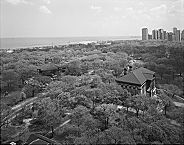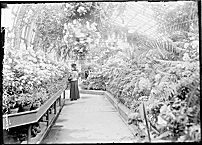| Entries |
| L |
|
Lincoln Park
|

|
The state created the Lincoln Park Commission as a special district, one of three Chicago-area park districts, in 1869, with authority over lakefront land between North and Diversey Avenues. In the following decades workers excavated artificial ponds, mixed tons of clay and manure into the sand, and, after some failed experiments, largely stabilized the shoreline. By the end of the century many enduring features of the park were in place, including abundant greenery, fountains and statuary, winding walkways, bicycle paths, and the beginnings of the Lincoln Park Zoo (1868), Lake Shore Drive (1875), and the Lincoln Park Conservatory (1892).

|
In addition to recreational facilities and programs including beaches, picnic grounds, tennis courts, athletic fields, and summer theater, Lincoln Park has become home to the Chicago Academy of Sciences, which relocated in 1893 and reopened in 1999 as the Peggy Notebaert Nature Museum, and the Chicago Historical Society, which relocated in 1932.
The Encyclopedia of Chicago © 2004 The Newberry Library. All Rights Reserved. Portions are copyrighted by other institutions and individuals. Additional information on copyright and permissions.